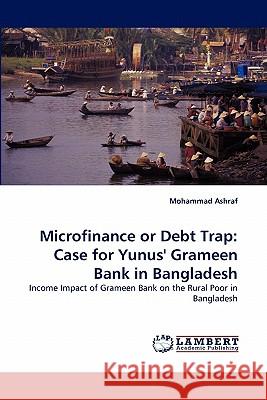Microfinance or Debt Trap: Case for Yunus' Grameen Bank in Bangladesh » książka
Microfinance or Debt Trap: Case for Yunus' Grameen Bank in Bangladesh
ISBN-13: 9783844312539 / Angielski / Miękka / 2011 / 80 str.
The idea of microfinance is, in fact, the brainchild of Muhammad Yunus, a Nobel Laureate (2006) Economics Professor of the University of Chittagong in Bangladesh, who materialized his idea into a project initiated in the village compound of Jobra closed to that university in 1976. In 1983, the project was transformed into a full-fledged microfinance institute named as Grameen Bank (GB). Until today the age of GB is more than 30 years, but how far has the poverty been eradicated from the society is an empirical question. No long-term study has, however, found how often borrowers graduate to the status of non-poor. The present study based on empirical analysis shows that GBs microfinance program has no statistically significant impact on increasing income of the rural poor. Based on the outcomes of other studies, it is observed that GB is no more a conduit of alleviating rural poverty, rather it appears to have a devastating negative impact on the status of the rural poor that is termed by the experts as a debt trap or a death trap for the rural destitute in Bangladesh.











